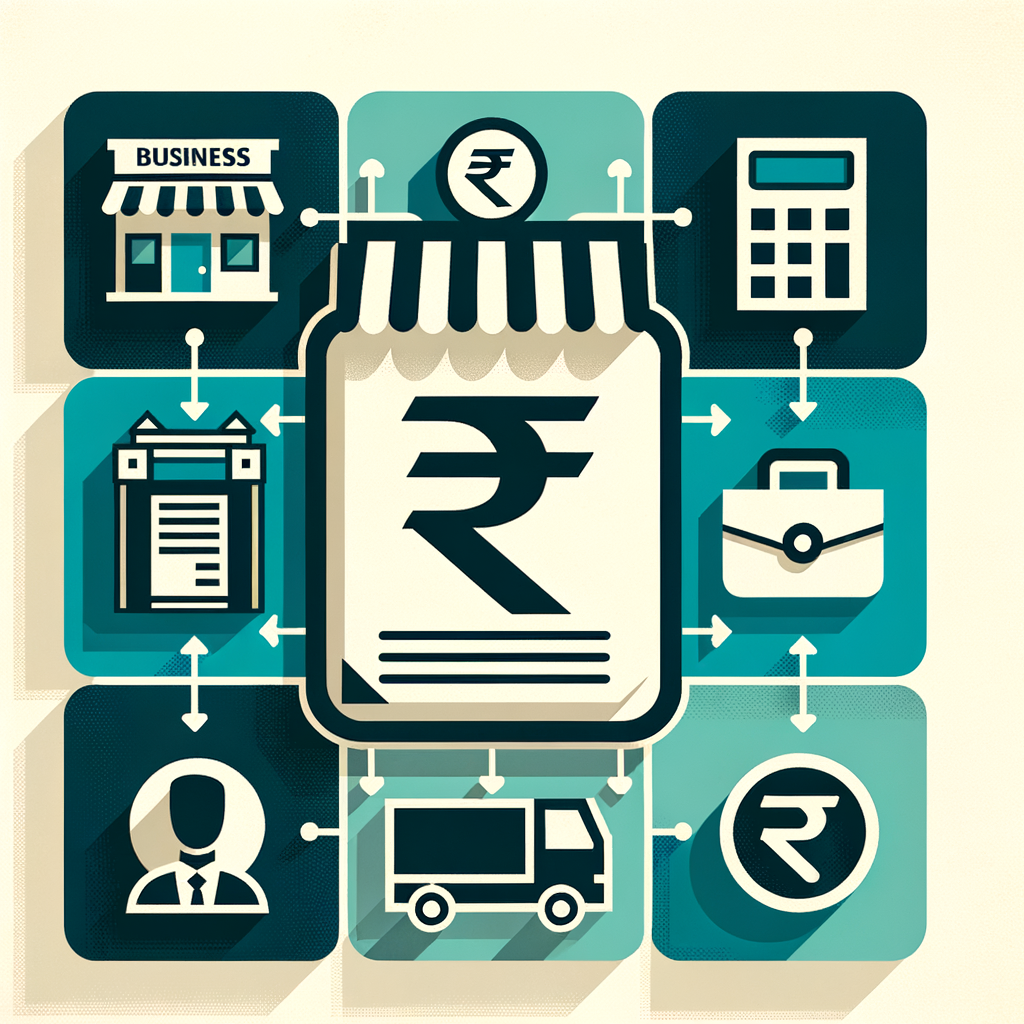Presumptive Taxation (44AD, 44ADA, 44AE) Explained with Real-Life Examples
Tired of the complexities of maintaining detailed books of accounts and facing the stress of tax audits? For many small business owners, freelancers, and professionals in India, tax compliance can be a significant burden. The good news is that the Income Tax Act offers a powerful solution to simplify this process: The Presumptive Taxation Scheme. This guide provides a complete breakdown of presumptive taxation explained in simple terms. We will explore Sections 44AD, 44ADA, and 44AE with practical, real-life examples of presumptive taxation India to help you understand how you can benefit. We will also cover the crucial topic of presumptive taxation for salaried individuals India who have a side income, showing how this scheme can work wonders for your financial planning.
What is Presumptive Taxation Explained?
At its core, presumptive taxation is a simplified method where your business or professional income is “presumed” to be a specific percentage of your total turnover or gross receipts. Instead of calculating actual profits by deducting expenses from revenue, the tax authorities allow you to declare a fixed percentage of your revenue as your income. The primary benefit of this scheme is immense: it relieves you from the mandatory requirement of maintaining detailed books of accounts and getting them audited. This directly translates into saving a significant amount of time, effort, and money on professional fees, allowing you to focus more on your core business activities. The scheme is primarily governed by three sections of the Income Tax Act, each designed to cater to a different group of taxpayers:
- Section 44AD: For eligible small businesses.
- Section 44ADA: For specified professionals like doctors, lawyers, and freelancers.
- Section 44AE: For businesses involved in plying, hiring, or leasing goods carriages.
Section 44AD: Presumptive Taxation for Small Businesses
This section is a boon for small taxpayers engaged in any eligible business, providing a straightforward way to compute taxable income and reduce compliance costs. It’s designed to support the growth of small enterprises by simplifying their tax obligations.
Who is Eligible for Section 44AD?
To take advantage of this scheme, you must meet certain criteria. The eligibility is defined based on the type of taxpayer, turnover limits, and the nature of the business.
- Eligible Assessees: The scheme is open to Resident Individuals, Hindu Undivided Families (HUFs), and Partnership Firms. However, it’s important to note that Limited Liability Partnerships (LLPs) are not eligible to opt for this section.
- Turnover Limit: Your total business turnover or gross receipts in the financial year should not exceed ₹2 crore.
- Note: In a move to promote digital transactions, this limit has been increased to ₹3 crore for the financial year 2023-24 (AY 2024-25) onwards, provided that your cash receipts are not more than 5% of the total turnover or gross receipts.
- Ineligible Businesses: Certain businesses are explicitly excluded from this scheme:
- Businesses involved in plying, hiring or leasing goods carriages, as they are covered under the specific provisions of Section 44AE.
- Any business operating as an agency.
- Individuals earning income in the nature of commission or brokerage.
How is Income Calculated? (44AD presumptive taxation examples India)
Under Section 44AD, your taxable business income is presumed to be a fixed percentage of your total turnover. This encourages digital payments by offering a lower presumptive rate for non-cash transactions.
- 8% of the total turnover or gross receipts that are received in cash during the year.
- 6% of the total turnover or gross receipts that are received through banking channels or digital modes (such as account payee cheques, bank drafts, UPI, debit/credit cards, NEFT/RTGS, etc.).
Example:
Let’s consider a practical scenario to understand the calculation.
- Scenario: Mr. Kumar runs a small retail store. His total turnover for the financial year is ₹90 lakhs. He has been diligent in tracking his payment modes.
- ₹40 lakhs were received in cash from customers.
- ₹50 lakhs were received via UPI and card payments.
- Calculation:
- Presumed income from cash sales: 8% of ₹40,00,000 = ₹3,20,000
- Presumed income from digital sales: 6% of ₹50,00,000 = ₹3,00,000
- Total Taxable Business Income: ₹3,20,000 + ₹3,00,000 = ₹6,20,000
Under this scheme, Mr. Kumar will declare ₹6,20,000 as his income from the business. He will not be required to provide a detailed profit and loss statement or get his accounts audited, making his tax filing process incredibly simple.
Section 44ADA: Simplified Taxation for Professionals
Section 44ADA was introduced to extend the benefits of presumptive taxation to professionals. This section offers significant relief, particularly to freelancers, consultants, and independent professionals who may not have extensive business infrastructure but still face compliance burdens.
Who Can Opt for Section 44ADA?
Eligibility for Section 44ADA is specific to certain professions and is subject to a gross receipts limit.
- Eligible Assessees: The scheme can be availed by Resident Individuals or Partnership Firms (excluding LLPs) who are engaged in specified professions.
- Specified Professions: The list includes professions notified under section 44AA(1) of the Income Tax Act:
- Legal
- Medical
- Engineering
- Architectural Profession
- Accountancy Profession
- Technical Consultancy
- Interior Decoration
- Other professions as notified by the CBDT.
- Gross Receipts Limit: Your total gross receipts from the profession should not exceed ₹50 lakh in a financial year.
- Note: Similar to Section 44AD, this limit is increased to ₹75 lakh from FY 2023-24 (AY 2024-25) onwards if cash receipts do not exceed 5% of the total gross receipts.
44ADA Taxation Explained with Examples India
The calculation method for professionals under this section is straightforward and generous, recognizing the nature of professional expenses.
- Calculation Method: Your taxable professional income is presumed to be a flat 50% of your total gross receipts for the financial year. The remaining 50% is automatically considered as your business expense, for which you don’t need to provide any proof.
Example:
Here’s a clear example of how 44ADA taxation explained with examples India works in practice.
- Scenario: Ms. Anjali is a freelance content writer. Her total gross receipts for the financial year are ₹30 lakhs. She received all her payments directly into her bank account.
- Calculation:
- Presumed Professional Income: 50% of ₹30,00,000 = ₹15,00,000
Ms. Anjali’s taxable income from her profession is deemed to be ₹15 lakh. A key point to remember is that she cannot claim any further business-related expenses against this income (like internet bills, software subscriptions, laptop depreciation, etc.). The 50% presumptive rate is deemed to cover all her professional expenditures.
Section 44AE: For Transporters
This specialized section of the presumptive taxation scheme is tailored for small taxpayers engaged in the business of plying, hiring, or leasing goods carriages. It simplifies income calculation based on the number and type of vehicles owned.
Eligibility and Conditions for 44AE
- Eligible Assessees: This scheme can be adopted by any person (Individual, HUF, Firm, Company, etc.) who owns not more than 10 goods vehicles at any time during the financial year.
- The scheme’s provisions are applied for each goods vehicle separately, and income is calculated on a monthly basis.
Understanding the Tax Implications of 44AE in India
The income under Section 44AE is not calculated as a percentage of turnover. Instead, it is determined on a per-vehicle, per-month basis, which makes the calculation predictable and easy.
- For Heavy Goods Vehicles (HGV) (gross vehicle weight exceeding 12,000 kgs): The presumed income is ₹1,000 per ton of gross vehicle weight for every month (or part of a month) that the vehicle is owned by the taxpayer.
- For Other Goods Vehicles (Light Commercial Vehicles – LCVs): The presumed income is a flat rate of ₹7,500 for every month (or part of a month) that the vehicle is owned.
Example:
Let’s see how the tax implications of 44AE in India play out for a small fleet owner.
- Scenario: Mr. Singh runs a small transport business. He owns 2 light commercial vehicles (LCVs) and 1 heavy goods vehicle (HGV) with a gross vehicle weight of 16 tons. He owned all three vehicles for the entire financial year (12 months).
- Calculation:
- Income from LCVs: 2 vehicles × ₹7,500/month × 12 months = ₹1,80,000
- Income from HGV: 1 vehicle × ₹1,000/ton × 16 tons × 12 months = ₹1,92,000
- Total Taxable Business Income: ₹1,80,000 + ₹1,92,000 = ₹3,72,000
(Note: For the latest rules, rates, and eligibility criteria, it is always advisable to refer to the official Income Tax Department of India website)
Presumptive Taxation for Salaried Individuals India: Can You Use It?
This is one of the most frequently asked questions by salaried professionals who are exploring side hustles or freelance work. The answer is a resounding YES. If you have a side business or freelance income alongside your regular salary, you can absolutely opt for the presumptive scheme for that portion of your income. The presumptive tax benefits for salaried individuals apply only to their eligible business or professional income, not their salary income, which continues to be taxed under normal provisions.
How to Calculate Your Total Taxable Income
The key is to calculate the income from each source separately and then club them together to determine your total tax liability. This understanding presumptive taxation for salaried employees is crucial for correct tax filing.
Let’s understand this with a comprehensive example.
Scenario: Mrs. Gupta is a salaried software engineer with an annual salary of ₹20 lakhs. In her spare time, she undertakes freelance web development projects, earning gross receipts of ₹12 lakhs in the financial year.
- Calculate Salary Income: Her salary income is taxed as per normal rules. After the standard deduction of ₹50,000, her taxable salary income is ₹19,50,000.
- Calculate Freelance Income (using Section 44ADA): Her freelance web development work qualifies as a profession under Section 44ADA.
- Presumed Professional Income: 50% of ₹12,00,000 = ₹6,00,000.
- Calculate Gross Total Income (GTI): Now, we combine both incomes.
- GTI = Taxable Salary Income + Presumed Business Income
- GTI = ₹19,50,000 + ₹6,00,000 = ₹25,50,000
- Claim Deductions: From this Gross Total Income, Mrs. Gupta can claim all eligible deductions under Chapter VI-A. For instance, if she invested in PPF, she can claim a deduction under Section 80C for up to ₹1.5 lakh.
- Calculate Final Tax: The final income tax will be calculated on the Net Taxable Income (₹25,50,000 – ₹1,50,000 = ₹24,00,000) as per the income tax slab rates applicable to her.
This is a clear illustration of the positive impact of presumptive taxation in India, as it allows salaried individuals to manage their side income taxes with minimal hassle.
Conclusion
In conclusion, presumptive taxation explained is a powerful tool from the Income Tax Department designed to simplify compliance for small taxpayers. By opting for Sections 44AD, 44ADA, or 44AE, eligible business owners, professionals, and transporters can significantly reduce their bookkeeping burden, save on audit fees, and simplify their annual tax filing process. This taxpayer-friendly scheme allows you to focus your valuable time and resources on growing your business rather than getting tangled in complex tax laws and compliance. Whether you’re a small retailer, a freelance consultant, a transport operator, or a salaried employee with a growing side business, understanding these schemes is the first step towards smarter, more efficient tax planning.
Ready to simplify your taxes but not sure where to start? Let TaxRobo’s experts guide you. Contact us today for a consultation on your tax filing and business compliance needs.
Frequently Asked Questions (FAQs)
1. Can I claim deductions like 80C if I opt for a presumptive taxation scheme?
Yes, absolutely. The income calculated under the presumptive scheme (e.g., 8% under 44AD or 50% under 44ADA) is considered your final business/professional income. This amount is then added to your other sources of income (like salary or interest income) to arrive at your Gross Total Income (GTI). You are fully entitled to claim deductions under Chapter VI-A (such as Section 80C for investments, 80D for medical insurance, etc.) from this GTI before calculating your final tax liability.
2. What if my actual business profit is lower than the presumed percentage?
If you declare an income that is lower than the prescribed presumptive rates (8%/6% under 44AD or 50% under 44ADA) and your total income exceeds the basic exemption limit, you cannot use the presumptive scheme for that year. In such a case, you will be required to maintain proper books of accounts and get them audited by a Chartered Accountant under Section 44AB of the Income Tax Act.
3. Do I need to pay advance tax if I am under the presumptive scheme?
Yes, you are liable to pay advance tax. However, the scheme provides a major simplification. If you opt for Section 44AD or 44ADA, you are required to pay the entire amount of your advance tax liability in a single installment on or before the 15th of March of the financial year. You are exempt from the hassle of paying tax in quarterly installments (in June, September, and December), which is mandatory for other taxpayers.
4. Can I opt in and out of the presumptive scheme every year?
There are specific rules regarding this. For Section 44AD, if you opt for the presumptive scheme and then in any subsequent year you opt out, you cannot opt back into the scheme for the next 5 assessment years. During this five-year period, you will be required to maintain books of accounts and get them audited if your income exceeds the basic exemption limit. This restriction, however, does not apply to Section 44ADA. Professionals under 44ADA have the flexibility to opt in and out of the scheme on a yearly basis.



